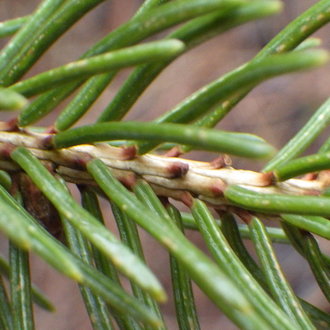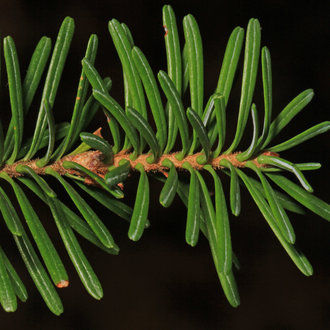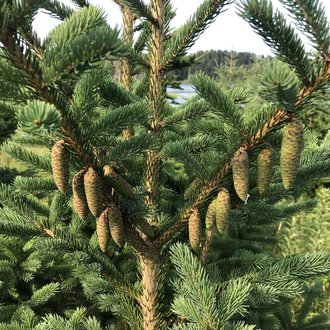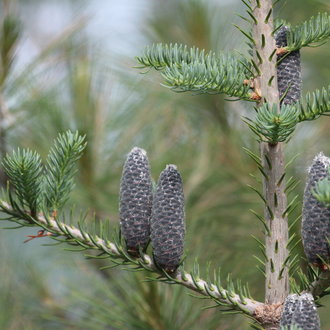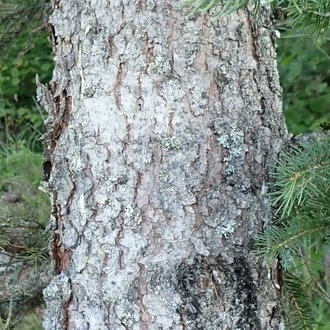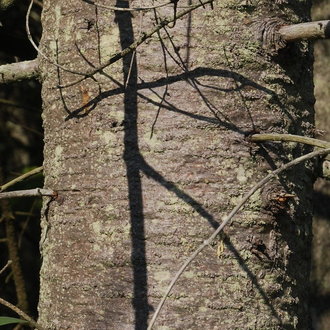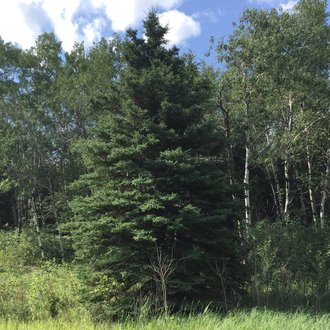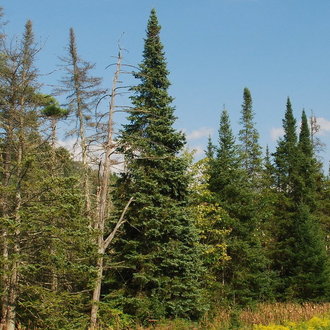White Spruce vs Balsam Fir
Balsam fir and white spruce are sometimes confused where they overlap; balsam fir grown in sun can have a similar bluish color to its foliage and the needle shape and arrangement can look more similar than when in shade. Both can occupy late stages in forest succession and be found in similar habitats. The two species are easily told apart by a close look at their needles, by crushing and smelling the needles, by cones, and by bark.
White Spruce (Picea glauca) | Balsam Fir (Abies balsamea) |
A conifer native to the northernmost reaches of North America; often found on richer sites than black spruce. | An evergreen conifer native to North America, and a late-successional species found in areas that have not been disturbed recently. The only fir found in the northeast. |
Sharp-tipped needles attach to the twigs by a narrow woody projection. Photo © Ben Armstrong, CC BY 4.0. | Blunt-tipped needles attach to the twigs by a suction-cup base. Photo © Judy Gallagher, CC BY 4.0. |
Downward-hanging cones, greenish when unripe. Photo © Rob Foster, CC BY 4.0. | Upright cones, dark gray when unripe. Photo © Rob Foster, CC BY 4.0. |
Scaly bark, often slightly paler in color. Bark of mature trees shows significant vertically-oriented cracks. Photo © Mary Krieger, CC BY 4.0. | Smooth gray bark, often with horizontal rows of lenticels and resin-filled blisters, but with few to no vertically-oriented features. Photo © Doug Goldman, CC BY 4.0. |
Broader shape, still conical but with slightly rounder crown. Photo © Mary Krieger, CC BY 4.0. | Narrower, more sharply-conical shape. Photo © Doug Goldman, CC BY 4.0. |
References & External Resources
These short lists show only links helpful for ID. For a complete list of references and resources also covering other aspects of ecology, visit the links section of the full article on each plant, which is the first entry here.



